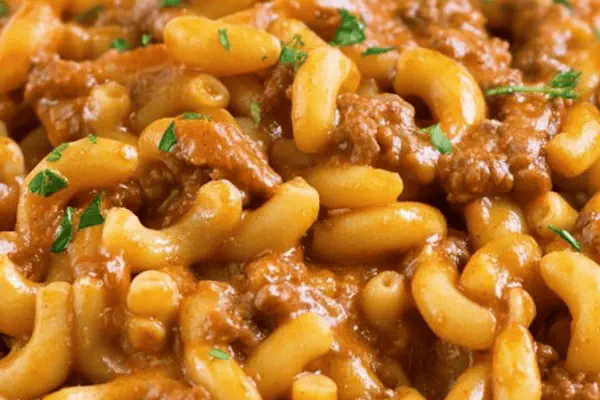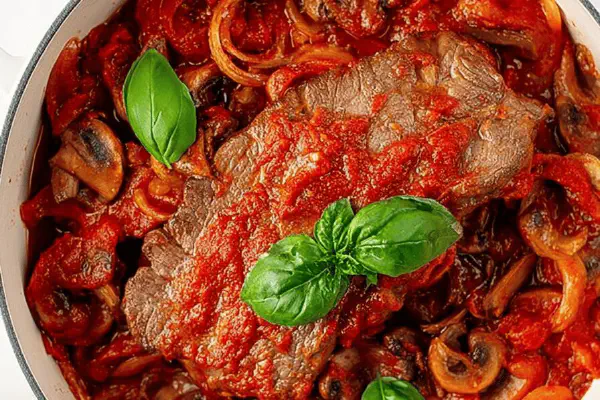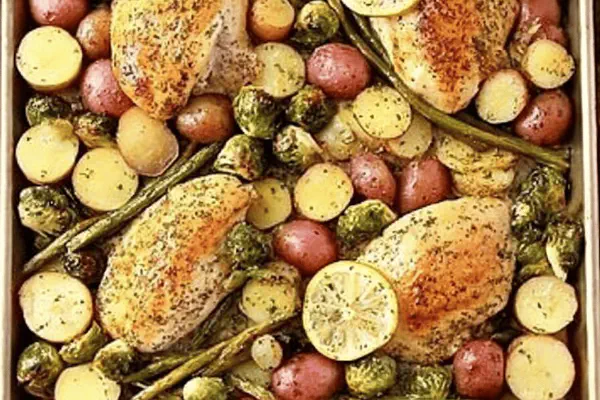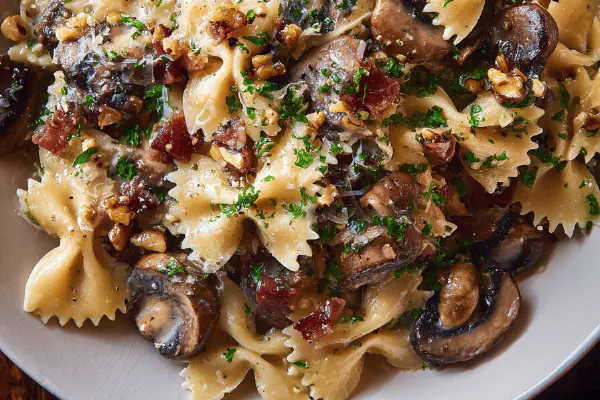Spaghetti with Chorizo Spinach
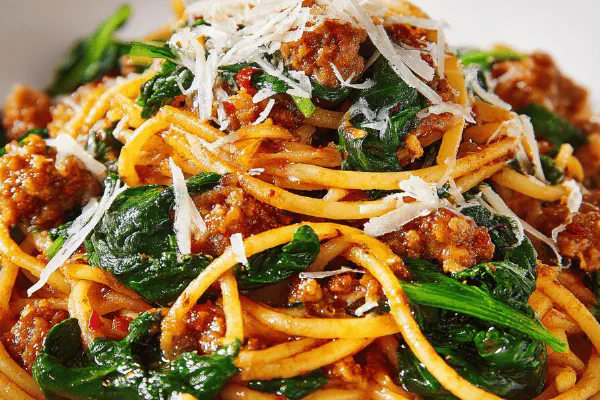
By Emma
Certified Culinary Professional
Ingredients
- 350 g spaghetti, dried, (changed quantity - slightly more than ¾ lb)
- 150 g spicy sausage, like nduja or a milder chorizo, thinly sliced (swapped chorizo for nduja variant)
- 30 ml olive oil
- 480 ml canned crushed tomatoes or fresh pureed (increased sauce volume slightly)
- 140 g baby spinach leaves, or tightly packed fresh spinach
- Salt and freshly cracked black pepper
- Parmesan cheese shavings or Pecorino Romano for sharper bite
- Optional pinch chili flakes for heat
About the ingredients
Method
- Fill a large pot with salted water, bring to rolling boil. Add spaghetti and stir occasionally to stop sticking. Watch for just shy of al dente, around 9-11 minutes depending on brand. Soft but with firm bite. Drain, reserving a little pasta water for sauce if needed.
- Heat olive oil in a large skillet over medium-high. Toss in sausage slices; hear sizzling, smell rich fat releasing. Cook until golden edges, slightly crisp, about 5 minutes, stirring occasionally.
- Pour in crushed tomatoes. Stir to combine with sausage oil, deglaze tasty browned bits off bottom. Bring to gentle boil then lower heat to simmer. Small bubbles, sauce thickened slightly but still juicy, around 5 minutes.
- Add spinach directly to skillet. Stir vigorously; watch it wilt quickly - deep green fades to dark shiny leaves, tender not mushy. Should only take 1-2 minutes. Season with salt, pepper; test a leaf.
- Transfer drained spaghetti into skillet. Toss carefully; strands coat evenly with sauce, sausage bits distributed. If dry, splash reserved pasta water to loosen. Heat through 1-2 minutes until all elements marry. No clumps.
- Serve immediately on warm plates. Scatter freshly shaved Parmesan or Pecorino. A drizzle of olive oil if feeling indulgent. Optional chili flakes sprinkled for kick.
- Enjoy texture contrast: tender spinach, crisp sausage edges, al dente pasta. Sauce rich but balanced acidity. Best eaten hot, any leftovers lose charm quickly.
Cooking tips
Chef's notes
- 💡 Brown sausage slices in olive oil over medium-high heat; you want that crisp golden edge, not mush. Listen for steady sizzling noise — fat rendering releases flavor. Don’t crowd pan or steam instead of brown. Keep stirring gently to prevent burning but let contact stay consistent. Oil carries richness; avoid cheap olive oil to keep sauce depth intact.
- 💡 Add crushed tomatoes after sausage cooks; deglaze pan well — scrape those tasty browned bits off the bottom with your spoon. Small bubbles mean simmer just started. Sauce texture shifts here. Avoid full boil or sauce dries out and acidity sharpens. Adjust heat to maintain gentle simmer around 5 minutes for balanced body.
- 💡 Spinach wilts fast; add last to preserve green color and slight crunch. Stir vigorously but quickly; deep green shifts to shiny dark leaves within 1-2 minutes. Overcook and leaves turn limp, dull, mushy. Frozen spinach requires pressing dry first, or sauce turns watery. Fresh preferred for texture contrast against firm pasta and crisp sausage.
- 💡 Pasta cooking same story: Salt water properly, timing by bite not clock. For spaghetti, 9-11 minutes depending on brand. Should still have firm resistance when bitten - al dente means feel, slight chew, not soft mush or raw crunch. Reserve pasta water before draining. Splash into sauce if dry to loosen. Water starch helps sauce cling well without thinning out.
- 💡 Finish tossing pasta gently in skillet with sausage and wilted spinach. Strands coat evenly if moisture balanced. Cheese shavings on top add salty crunch and umami. Avoid grated powder which melts into sauce and loses texture. Optional drizzle olive oil for shine and additional layer of flavor but use sparingly so it doesn’t grease plate.
Common questions
Can I swap chorizo for another sausage?
Yes. Nduja works well; spreadable and spicy. Mild Italian sausage okay if you want less heat. Avoid very lean sausages or dry texture. Fat content helps flavor and sauce richness.
How to avoid soggy spinach?
Add raw fresh leaves last after sauce simmers. Stir fast, watch color shift green to dark shiny quickly. Remove promptly. If frozen, thaw and press out excess water hefty to keep sauce tight. No extra water means better texture.
Pasta sticky after cooking?
Usually water lacks enough salt or pasta overcooked. Stir during boiling to avoid clumps. Drain promptly. Splash reserved pasta water back in sauce to smooth clumps if too thick. Don’t rinse pasta or you’ll lose starch needed for sauce.
What about leftovers and storage?
Cool quickly. Store in airtight container, fridge up to 2 days best. Spinach softens overnight. Can reheat gently on stove adding drop olive oil or reserved water to loosen. Avoid microwave strong blasts, kills texture fast. Reheat only once.
